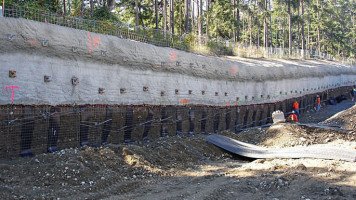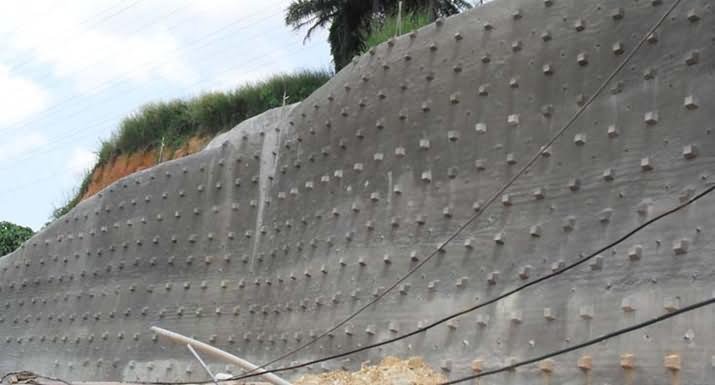The global stability of soil nail walls is commonly evaluated using two-dimensional limit equilibrium principles, which are used for conventional slope stability analyses. In practise, different shapes of the failure surface behind the soil nail wall have been considered in various methods to analyze the global stability of soil nail walls.
Some of these shapes of the failure surfaces include: (1) planar , (2) bi-linear with a two-wedge slipping mass (e.g., German method as in Caltrans, 1991), (3) parabolic , (4) log spiral , and (5) circular . Numerical comparisons among different methods show that differences in the geometry of the failure surface do not result in a significant difference in the calculated factors of safety.
The conventional design of the soil nail wall is carried with reference to the allowable stress design procedure stated in the report of Federal Highway Administration for analyses, design and construction of soil nail walls .
The design includes analysis of external failure modes (such as global stability and sliding stability), analysis of internal failure modes (such as nail pullout failure and nail tensile strength failure), design of permanent facing and verification of important facing failure modes (such as facing flexure failure and facing punching shear failure as shown in the below picture.



